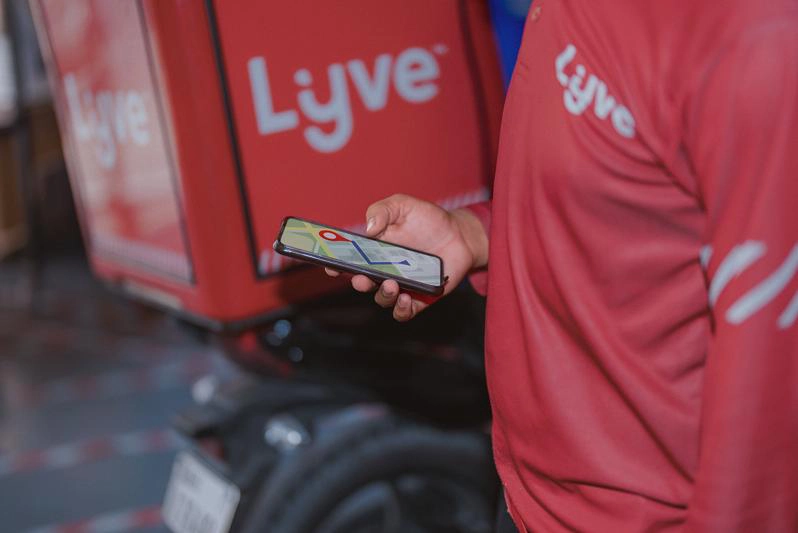When creating and signing your Service Level Agreements (SLA), it is important to have a system in place that enables you to measure their implementation. This helps you ensure your delivery partner is adhering to them. It also gives you a better understanding of your operations, allowing you to optimize them when necessary – to improve efficiency. Ensuring compliance manually, however, is a tedious task that may potentially produce inaccurate results, making the SaaS geofencing feature indispensable for your last-mile operations. This game-changing feature helps ensure your drivers pick-up and deliver orders at the right place and time – as per your SLAs.
Each order goes through the ‘preparation-pickup-drop-off’ journey, beginning at the store, before being handed over to the fleet driver, and finally reaching the customer. When compliance is breached throughout the journey, you need to be able to identify which party caused the delay. Was the store late in handing over the order to the driver, or was the latter late in picking it up? Was the customer location imprecise on the GPS, or did the driver arrive late for drop-off? A lack of visibility in last-mile delivery will hamper your ability to optimize operations, meet compliance requirements and ultimately decrease customer satisfaction.
It is therefore crucial to integrate a Delivery Dispatch Software that enables you to monitor your fleet’s whereabouts in real-time, linking each activity to a geographic location. This is achievable through the activation of the Geofencing feature, which we will cover in this blog.
What is geofencing and how does it work?
A geofence is a digitally created radius around a desired location (referred to as geolocation), within a geographic area. A geofence can be created around your pickup and drop off locations: store and customer address. You may choose to create a geofence around either your store or customer locations, or both – depending on your needs. It is thus important for your Delivery Dispatch Software to be configurable.
Through global positioning system (GPS), Wi-Fi or cellular data, the system can recognize when a driver enters the geofence, therefore allowing them to push the pick-up or drop-off button (depending on the location they have reached).
The radius is configured as per your needs – and generally ranges between 50 meters and 250 meters. Different branches may require different parameters, your software must thus allow configuration flexibility.
The purpose of this virtual boundary is to protect the integrity of each activity within the delivery process, while maximizing visibility from origin to destination.
The store geofence – order pick up
When the Arrived for pickup functionality is on, the driver can confirm his arrival by scanning the QR code or pushing the Arrived for pickup button. The system will then verify whether the driver is within the geofence.
If you choose to turn off the Arrived for pickup functionality and turn the Compliance for Pickup one on instead, the system will verify if the driver is within the store’s geofence when he pushes the pickup button.
Should the driver attempt to push the pick-up button before entering the geofence, the system will prevent them from doing so, protecting the integrity of this step.
In the case of a false positive (GPS glitch), the driver may not be able to confirm their arrival via the pick-up button, due to the system’s inability to locate them within the configured geofence. The driver will need to ask the dispatcher or store manager for a pick-up pin to enter on the application – to confirm their arrival without compromising their timely attendance proof.
The customer location geofence – order drop-off
When it comes to drop-off, the geofence is created around the customer’s location. Once the driver has entered the zone, they are allowed to push the drop-off button.
In case of a false positive causing the system to prevent the driver from confirming their arrival to the drop-off location, the driver can call the dispatcher or store manager to receive and enter a drop-off pin code into the application for confirmation. Another option would be asking the customer for the pin they’ve received via SMS once they had placed the order.
The SMS
You can configure the system to send out an SMS to the customer once their order is out for delivery. The SMS contains a link enabling them to track their order, to which you can also add a pin code. The latter is the one the driver may ask for in case of a false positive, to use as drop-off confirmation on the application. This option is suitable for businesses that wish to increase driver-customer interaction. During the pandemic however, businesses opted for contact-less, low conversation deliveries. You therefore need to ensure your geofencing feature is configurable to accommodate your business needs.
Reports
When choosing a software, you must ensure their reports are comprehensive, and inclusive of compliance data – as it is insightful and useful for operations optimization. If for instance, the report reveals that the drop-off pin code number had been used multiple times instead of the drop-off button by a particular driver, this indicates one of two things: either the driver had failed compliance multiple times and attempted to conceal it by avoiding revealing his whereabouts via the drop-off button, or there may be a system error. This information will allow you to take action by either rectifying the system error or investigating the drivers’ actions by verifying the exact time they had reached the drop-off locations on the system. This will help you ensure compliance and reduce the number of breaches in the future.
Lyve nGage is an easy to integrate, user-friendly and innovative Delivery Management Software designed to streamline On-demand operations. Its highly configurable features and advanced algorithm makes it a bespoke tool for businesses that require On-demand delivery – regardless of their industry or size. nGage increases the overall efficiency of the final mile, making it smoother and hiccup-free.
Read our case study to find out how one of the biggest fast-food chains worldwide have increased their SOS by 78% using our Automated Dispatching feature.
Click here to request a free demo. Our team of experts will guide you through the nGage software, explain its features and demonstrate its ability to increase your speed of service along with the drivers’ utilization rate.



